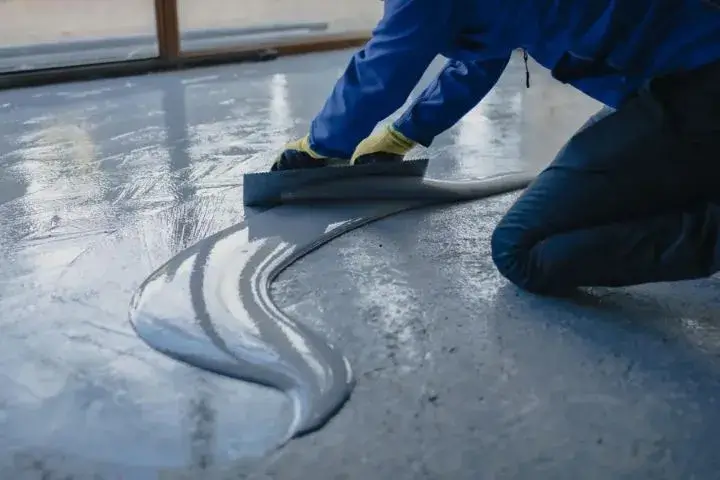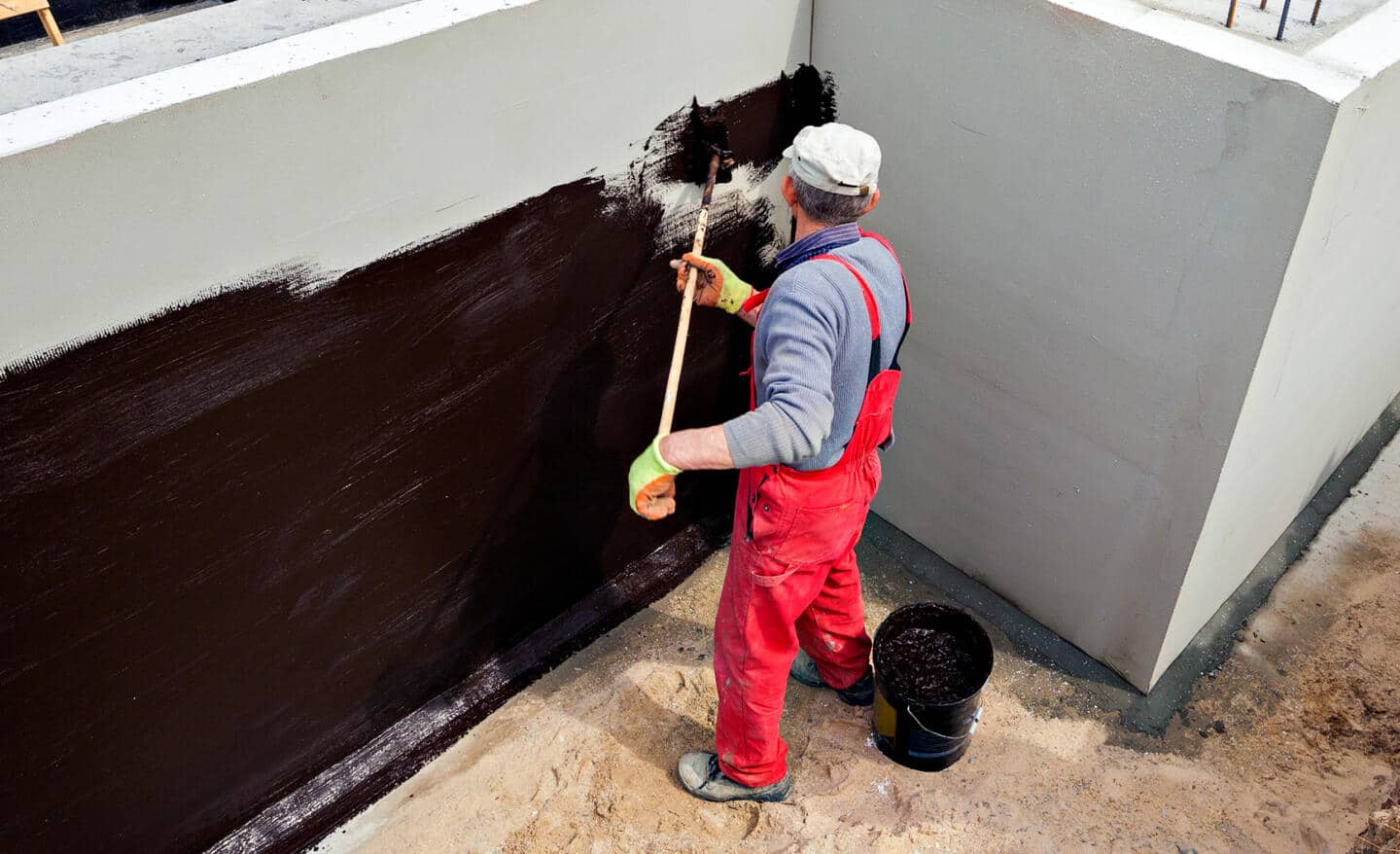Signs You Need a Drainage & waterproofing company Omaha Before It’s Too Late
Kinds of Waterproofing: Exploring the Numerous Methods and Their Applications
Waterproofing is a crucial facet of building and maintenance. It secures structures from the destructive results of water damages. There are numerous techniques readily available, each with its one-of-a-kind applications and advantages. From membrane systems to cementitious remedies, understanding these alternatives is crucial for efficient execution. The choice of waterproofing technique can considerably affect durability and longevity. Checking out these numerous techniques exposes their distinct advantages and prospective obstacles, motivating additional factor to consider of optimal remedies.
Membrane Waterproofing Systems
Membrane waterproofing systems work as a vital obstacle versus water breach in different structures. These systems typically are composed of thin sheets made from materials like rubber, thermoplastic, or bitumen, which are related to surface areas to stop wetness penetration. They can be set up above or listed below grade and are especially effective in locations vulnerable to high water exposure, such as basements, roof coverings, and foundations.The setup procedure includes cleaning the substratum, applying adhesives or guides, and specifically fitting the membrane to assure total coverage. Membrane systems can be either fully adhered, mechanically attached, or laid loose, depending upon the certain requirements of the job. They offer toughness and versatility, accommodating structural movements without endangering their waterproofing capacities. These systems can be enhanced with additional layers for enhanced defense. Eventually, membrane waterproofing systems are crucial for guarding structures against water damages and preserving long-term honesty.
Liquid-Applied Waterproofing Coatings
Liquid-applied waterproofing finishings give a functional option for protecting surface areas from water infiltration - French drain installation Omaha. These finishings contain fluid materials that, when used, form a smooth, versatile membrane. Their flexibility permits application on numerous substrates, including concrete, steel, and timber. The layers can be made use of in diverse atmospheres, from domestic to commercial setups, making them ideal for roofings, structures, and below-grade structures.One significant advantage of liquid-applied finishes is their ability to satisfy irregular forms and penetrate splits, developing a durable barrier versus wetness. They often display outstanding bond homes and resistance to UV radiation, guaranteeing durability and longevity. In addition, the application procedure is usually simple, enabling for fast setup and decreased labor expenses. This technique also reduces the danger of water merging, as the continual layer properly directs water away from at risk locations. Generally, liquid-applied waterproofing finishes are a reliable choice for comprehensive water defense
Cementitious Waterproofing Solutions

Cementitious waterproofing options use a durable alternative for structures needing trusted wetness protection. These systems mostly use a blend of cement, sand, and chemical additives to produce a water-proof obstacle. They are often applied to surfaces such as concrete wall surfaces, structures, and floorings, offering a resilient, lasting protection versus water intrusion.One of the essential benefits of cementitious waterproofing is its ease of application; it can be applied utilizing a brush, roller, or spray, making it appropriate for numerous job dimensions. Additionally, this technique is compatible with several surface areas and can frequently be made use of together More Info with various other waterproofing techniques.Cementitious options are specifically reliable in atmospheres where water discover this direct exposure is a worry, such as basements or below-grade frameworks. Their outstanding attachment properties ensure that they bond well with substratums, giving a solid and impermeable layer against moisture infiltration.
Bentonite Waterproofing
Bentonite waterproofing is a highly reliable approach that makes use of sodium bentonite clay to create a natural barrier against water. This method exploits the one-of-a-kind homes of bentonite, which broadens upon contact with water, sealing any type of potential leakages and stopping wetness seepage. It is commonly used in different applications, consisting of foundation walls, passages, and maintaining wall surfaces, where water resistance is essential.Bentonite can be applied in numerous kinds, such as panels or coverings, giving convenience in setup. Its capacity to self-seal makes it an eye-catching choice for areas based on changing dirt or fluctuating water degrees. Furthermore, bentonite waterproofing is eco-friendly, as it is an all-natural product that does not present harmful chemicals right into the environments.
Water Drainage and External Waterproofing Equipments
Effective waterproofing frequently involves a combination of techniques, consisting of drainage and exterior systems. Drainage systems, such as French drains and sump pumps, are designed to reroute water far from frameworks, decreasing hydrostatic stress versus foundations. These systems are vital in stopping water accumulation that can bring about structural damage and mold growth.External waterproofing, on the various other hand, entails using safety barriers to the structure's top article outside. Strategies such as the installation of waterproof membrane layers, coatings, or sealants can assist protect against water seepage. This approach not just safeguards the foundation however likewise boosts the general sturdiness of the structure.Together, water drainage and outside waterproofing systems create a comprehensive service to handle water properly. By applying these techniques, building owners can guard their financial investments versus the destructive effects of moisture, ensuring lasting security and safety and security for their structures.
Regularly Asked Questions
Exactly how Do I Pick the Right Waterproofing Approach for My Project?
Selecting the right waterproofing approach depends on elements such as task kind, ecological problems, budget, and preferred longevity. Assessing these elements permits educated decisions tailored to particular needs and requirements.

Can Waterproofing Be Applied in Cold Climate Issues?
Waterproofing can be applied in winter conditions, yet it requires particular materials and techniques. Cold temperatures might impact curing times and adhesion, demanding mindful choice of products developed for low-temperature application.
What Are the Usual Indicators of Waterproofing Failing?
Common signs of waterproofing failure include visible water spots, peeling paint, wet smells, mold and mildew development, and cracks in wall surfaces or structures. Landscape drainage Omaha. These indicators suggest that dampness is penetrating the obstacle, endangering its efficiency
For How Long Does Waterproofing Last Before Needing Maintenance?
The longevity of waterproofing varies, normally lasting in between 5 to ten years. Elements such as material quality, ecological problems, and upkeep practices affect its toughness, demanding regular assessments to guarantee efficient security against water intrusion.
Are There Eco-Friendly Waterproofing Options Available?
The question of environment-friendly waterproofing choices discloses an expanding interest in sustainable materials (Sump pump discharge drainage Omaha). Numerous all-natural materials, such as plant-based sealers and recycled items, supply reliable solutions while minimizing environmental effect, attracting eco aware consumers